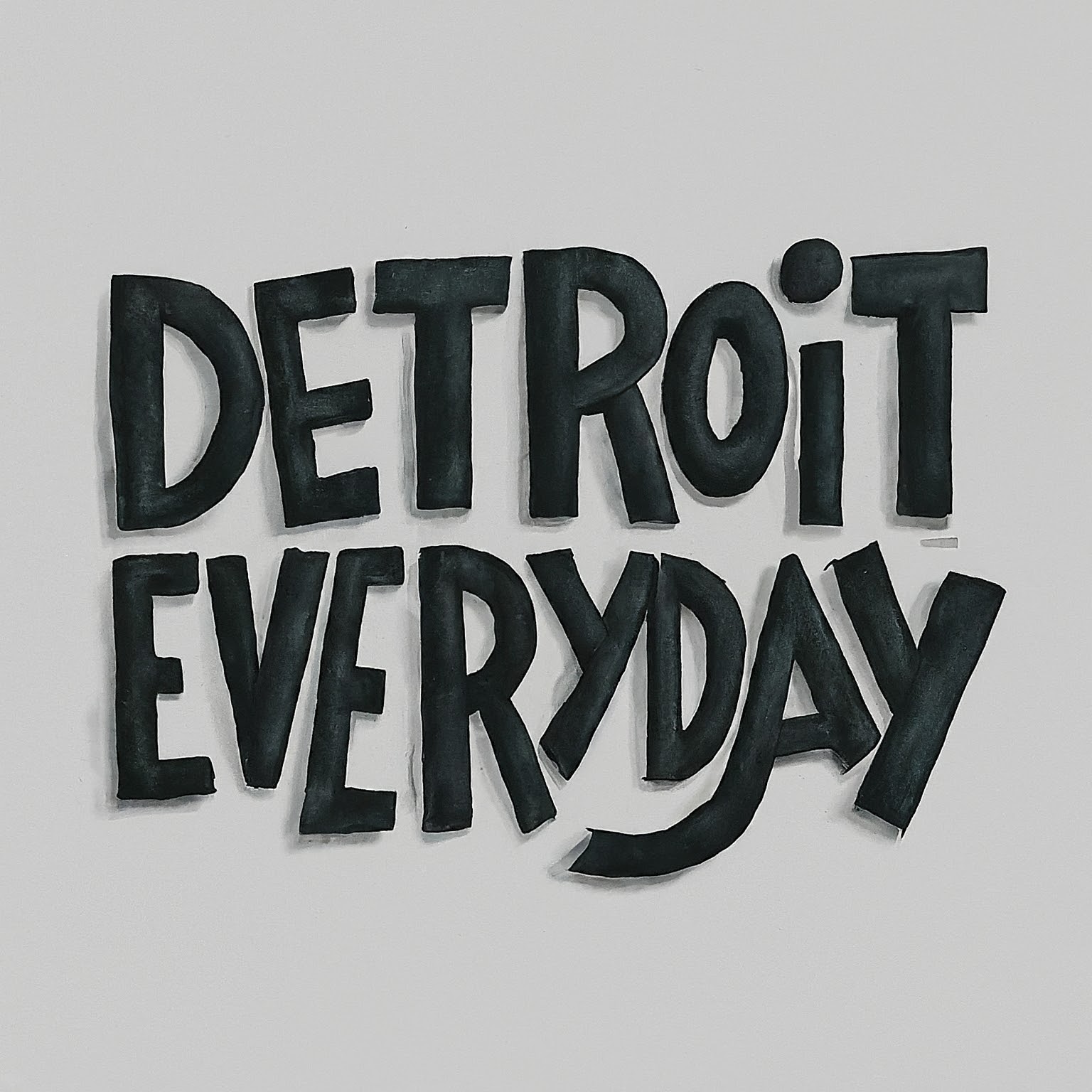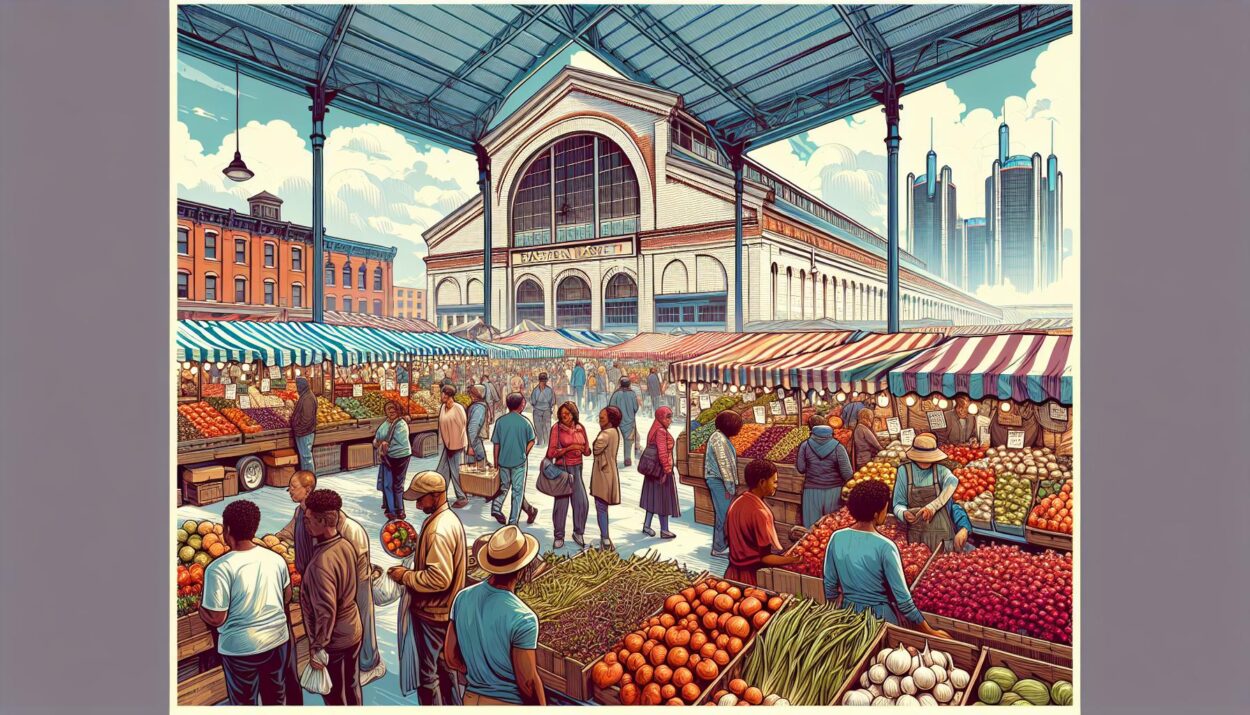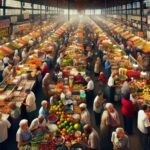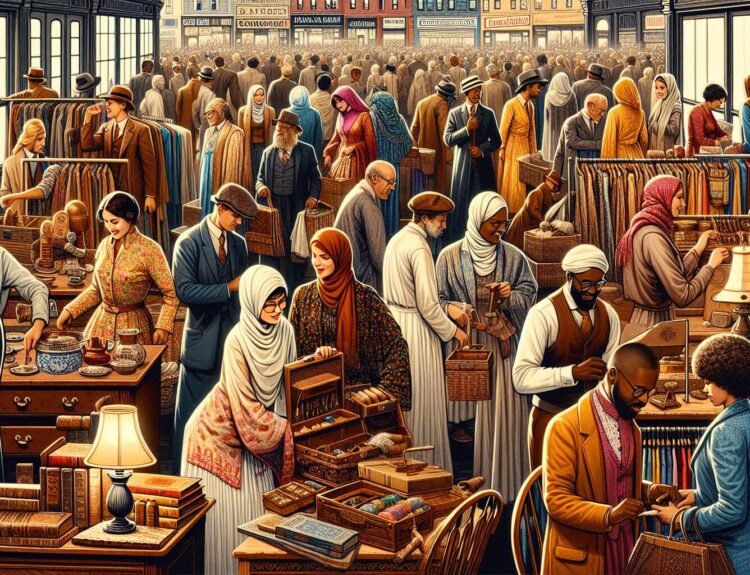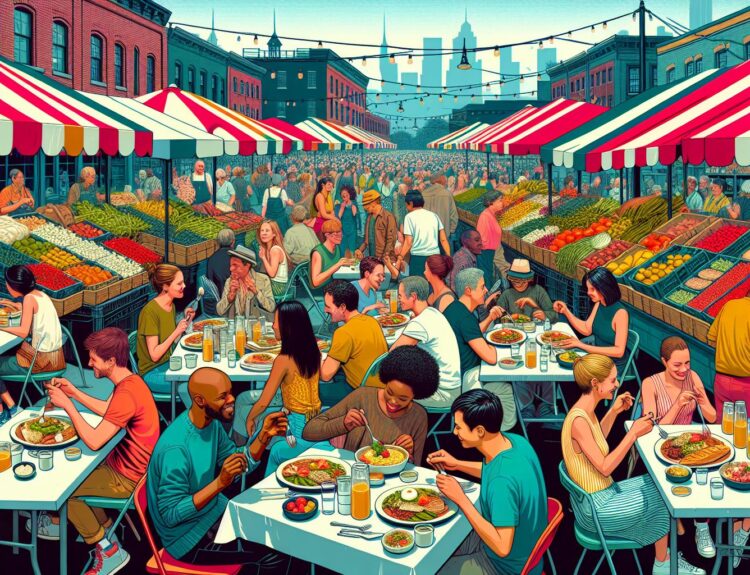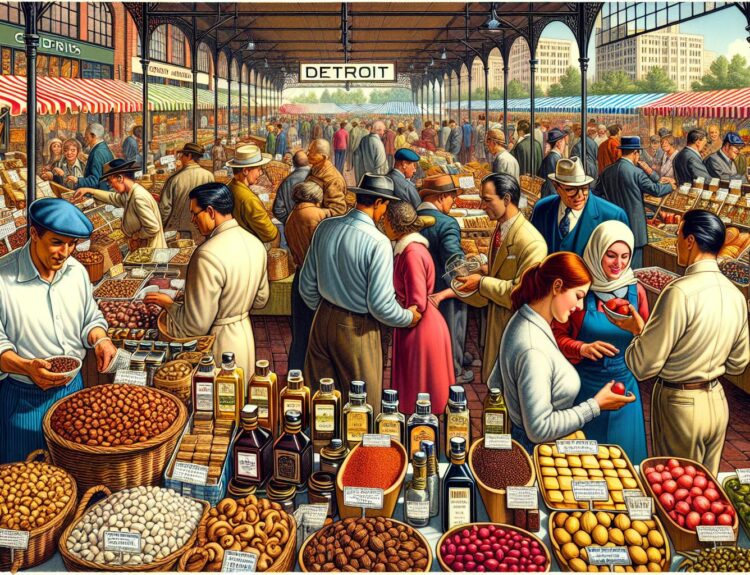If you’ve ever been to Detroit, chances are you’ve heard of the Eastern Market. It’s more than just a place to grab your weekly groceries. It’s a bustling hub of activity that’s been at the heart of the city for over 150 years.
The Eastern Market’s story begins in the 1800s, when it was just a humble open-air market. Over the years, it’s grown and evolved, reflecting the changing times and the resilient spirit of Detroit.
Today, it’s a vibrant part of the city’s cultural fabric, a place where history, community, and commerce intertwine. But how did it all begin? Let’s take a stroll down memory lane and explore the fascinating history of Eastern Market Detroit.
Early Beginnings of Eastern Market Detroit
The Eastern Market’s roots can be traced back to the mid-nineteenth century. Officially established in 1891, this bustling market was initially a simple, open-air gathering spot called the “Detroit Farmer’s Market”. It was a place where farmers from around the region could gather and offer their goods. But even back then, it wasn’t just about fresh produce. The Eastern Market was a melting pot of interactions between city residents and rural farmers – a highway of communication and commerce.
The market was so successful that by 1892, just one year after its official establishment, it had grown exponentially in size. The market was now housed in a large brick structure, a far cry from its initial open-air setup. According to records, by the early 1900s, over 250 vendors were part of the Eastern Market. This represented a significant chunk of the retail grocery business in Detroit.
In 1922, the market earned a distinctive title, being called the “market of markets”, reflecting its impact and importance to the city. In the same year, it had earned the respect of even other cities and was showcased as a model market in the American City Magazine. This recognition from a reputed publication reaffirmed the Eastern Market’s standing as a well-respected hub of commerce and community.
The growth of the Eastern Market did not stop there. The market continued to add more vendors, offering a diverse range of goods. It became known for its unique blend of rural and urban cultures. As the Eastern Market continued to grow, the array of goods expanded beyond fresh produce and groceries. By the 1930s, the addition of other unique sellers became prominent; they sold everything from clothes and spices to household goods and furniture. The Eastern Market had become more than a market – it was a cultural and social hub in the heart of Detroit.
The Eastern Market has weathered multiple challenges along the way such as the Great Depression in the 1930s and again with the economic downturn in 2008. Yet, it has never lost its heart. It’s been through a lot, morphing, evolving, yet always maintaining its primary function as a gathering spot for commerce and community interaction.
Surely, through the story of the Eastern Market, the spirit of Detroit itself can be seen. The resilience, the vibrancy, the rich cultural diversity – all embodied in this century-old hub.
|Year|
Growth and Evolution Over the Years
As the years rolled by, the Eastern Market began to evolve in more ways than one. From a small open-air market, it burgeoned into a vibrant and bustling hub of commerce.
By the turn of the 20th century, the Eastern Market had grown significantly. It boasted a staggering 250 vendors, all varied in nature. These were not just your run-of-the-mill grocery vendors. There were butchers, bakers, poultry sellers, fishmongers, and much more. An array of sights, sounds, and scents painted a colourful tapestry of diversity and life in the heart of Detroit.
| Year | Number of Vendors |
|---|---|
| 1900 | 250 |
The growth of the Eastern Market didn’t stop there. As the market continued to flourish, it solidified its position as a cornerstone of Detroit’s economy. The market was no longer just a place to buy groceries; it was a symbol of the city’s resilience and dynamism.
But let’s not forget, this period wasn’t all smooth sailing. The rise of the Eastern Market coincided with some of the most tumultuous periods in American history, the Great Depression being a notorious example. Yet, this resilient market powered through those challenging periods, coming out stronger and more defiant on the other side.
A market isn’t just about the goods it sells; it’s about the people who inhabit it. The Eastern Market was (and still is) more than a simple hub of commerce. It became a meeting place for Detroit residents to mingle and discuss daily issues, a place where I’d find diversity in unity, a place where different cultures fermented into one unique blend. So, amid the hustle and the bustle of trade and exchange, a rich social tapestry was woven.
In its constant state of change, an exciting mix of new trends found their way into the market’s fold. By the mid-20th century, the Eastern Market began to showcase a wider array of products. The traditional fresh produce stalls gave way to art galleries, eateries, and vintage clothing stores. There was a shift in the market, evolving from just a farmers market to a more holistic center of the community.
The Role of Eastern Market in Detroit’s Cultural Fabric
In the heart of Detroit, Michigan, sits one of the city’s most significant cultural cornerstones – the Eastern Market. As mentioned earlier, this bustling hub has evolved dramatically from a simple open-air market into an integral part of Detroit’s local culture and community.
Over the past century, the Eastern Market has not just been a place for commerce but a platform where diversity is celebrated. It bills itself as a condensation of Detroit’s multicultural character. It’s where vendors from various ethnic backgrounds converge and where locals find a piece of their home’s heritage. From the rare imported goods at specialty stalls to the freshest local produce at a farmer’s stand, the Eastern Market has become a hearty mix of the global and the local.
Introducing art galleries, eateries, and vintage shops into its heart has propelled the market into a thriving community-centric microcosm. Here, you can see artistic expressions, savor diverse cuisines, and discover fashion trends – all in a day’s stroll. The Eastern Market breathes life into creativity and has spun into an artistic hub that fuels local talents and supports artistic endeavors.
Apart from shopping, the Eastern Market has turned into a haven for food enthusiasts as well. Known for its incredible range of culinary delights, it has won the hearts of many foodies. The authenticity of the food reflects the rich heritage of many cultures, leading to an immersive gastronomic experience that tells stories of tradition, resilience, and unity.
More importantly, the Eastern Market serves as a reliable gathering place for Detroit residents. Whether it’s the weekend family outings or after-work get-togethers, it has continuously provided a friendly communal space. It’s also a regular host of public events like workshops, talks, and festivals which actively engage the residents and nurture a strong sense of community.
But hey, don’t let my words paint the full picture for you! Take a leap, and make the Eastern Market your next weekend destination. While you’re there, be sure to walk down the main market avenue, and you’ll feel the distinct pulse of this living, breathing marketplace – the heart of Detroit.
Exploring the Rich History of Eastern Market
Journey with me, as we delve into the grand tale that is the Eastern Market’s history. Established back in 1841, the market was originally a hub for wood and hay sales. It has, however, significantly evolved over time. Today, it’s a proud representation of Detroit’s cultural wealth.
The Market experienced a significant turn over the mid-19th century. It was then that fruit and vegetable vendors began to populate the market. This change marked the market’s evolution from a pure wood and hay sales hub to a flourishing space for farm produce.
For nearly two centuries, the Eastern Market has been more than a shopping destination—it’s been a vital part of the community. It became a place where people from all walks of life could come together, share stories, and enjoy the rich diversity that makes up the fabric of Detroit.
Take, for instance, Shed 3, which was erected in 1922 at the monumental cost of $200,000. It was the largest market building in Detroit at the time and represented a substantial City of Detroit investment in the market. The shed is made up of a reinforced concrete structure with a clear span arch roof. In 2010, it was renovated and updated to accommodate more vendors and visitors.
Let’s look at Shed 5. In 1981, the original Shed 5 burnt down, but in its place, the new shed was constructed with a commitment to keep the market spirit alive. The renovation included a commercial shared-use community kitchen and a dedicated plaza for food trucks. Not just that, it also houses the Market Garden and is used for festivals, cultural events, and private rentals.
| Year | Highlight | Cost (if any) |
|:(——–) |:———— |:————|
| 1841 | Established |
| Mid-19th Century | Transformation into farm produce hub |
| 1922 | Erection of Shed 3 | $200,000 |
| 1981 and onwards | Reconstruction and upgrades of Shed 5 |
Over the decades, new developments have shaped the Eastern Market. For example, the opening of fine dining establishments and art studios contributed significantly. It was here, amongst the hustle and bustle of the fresh produce vendors, aromatic food stalls, and eclectic artisan shops, that the market truly came into its cultural identity.
Conclusion
It’s been a remarkable journey for the Eastern Market, hasn’t it? From its humble beginnings as a wood and hay sales spot to becoming a vibrant farm produce hub and now a dynamic blend of commerce and creativity. It’s more than just a marketplace – it’s a symbol of Detroit’s resilience, diversity, and unity. The city’s investment in the market, as seen in the construction of Shed 3 and the rebuilding of Shed 5, shows a commitment to preserving its spirit. And with the recent additions of fine dining and art studios, the market’s cultural identity has only grown richer. The Eastern Market is truly at the heart of Detroit, and I can’t wait to see how it continues to evolve in the future.
